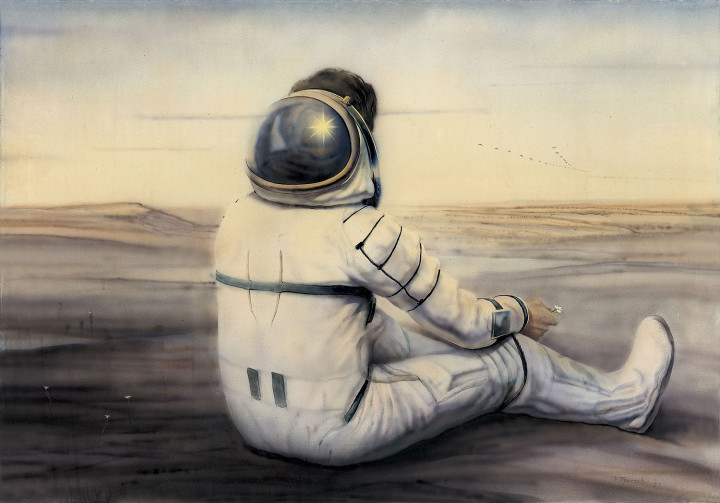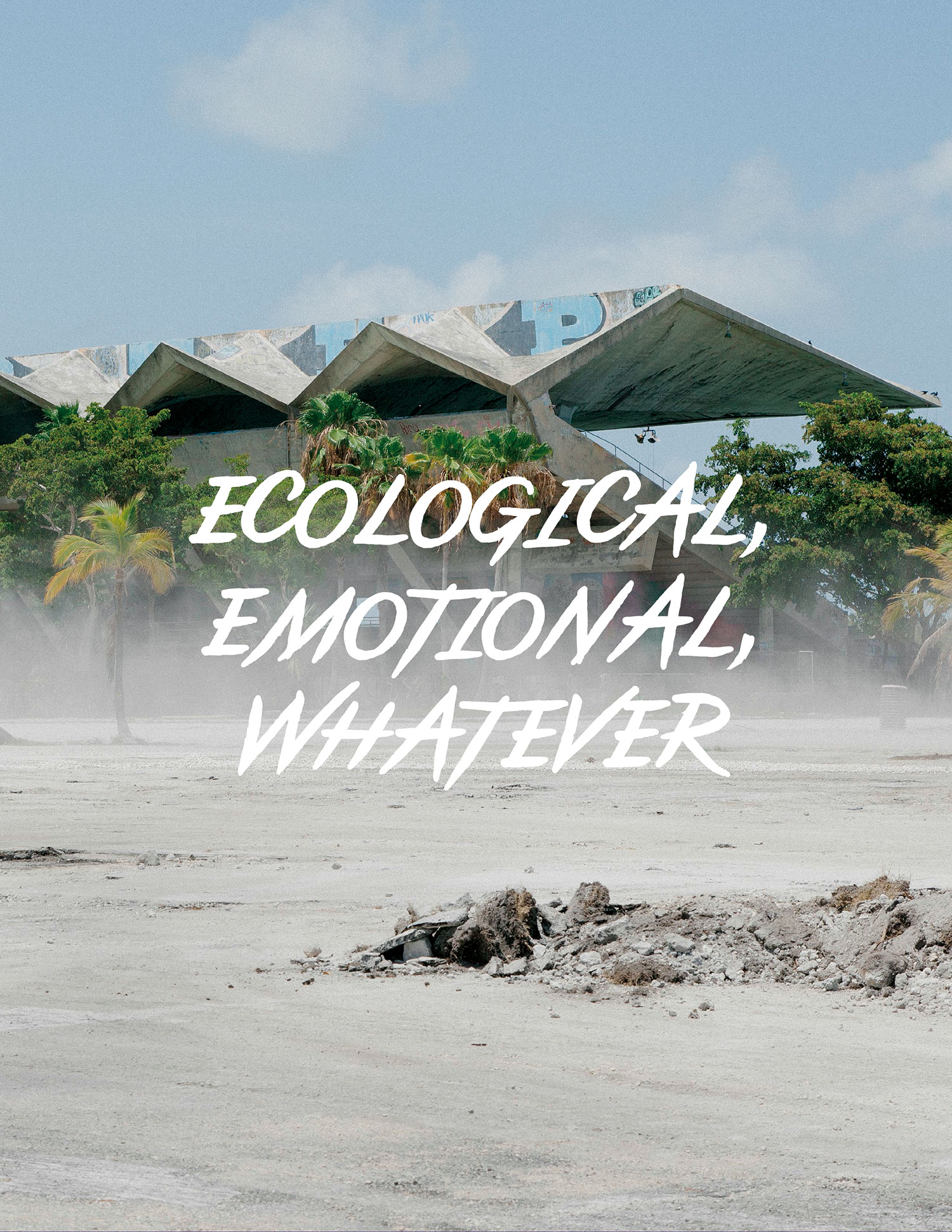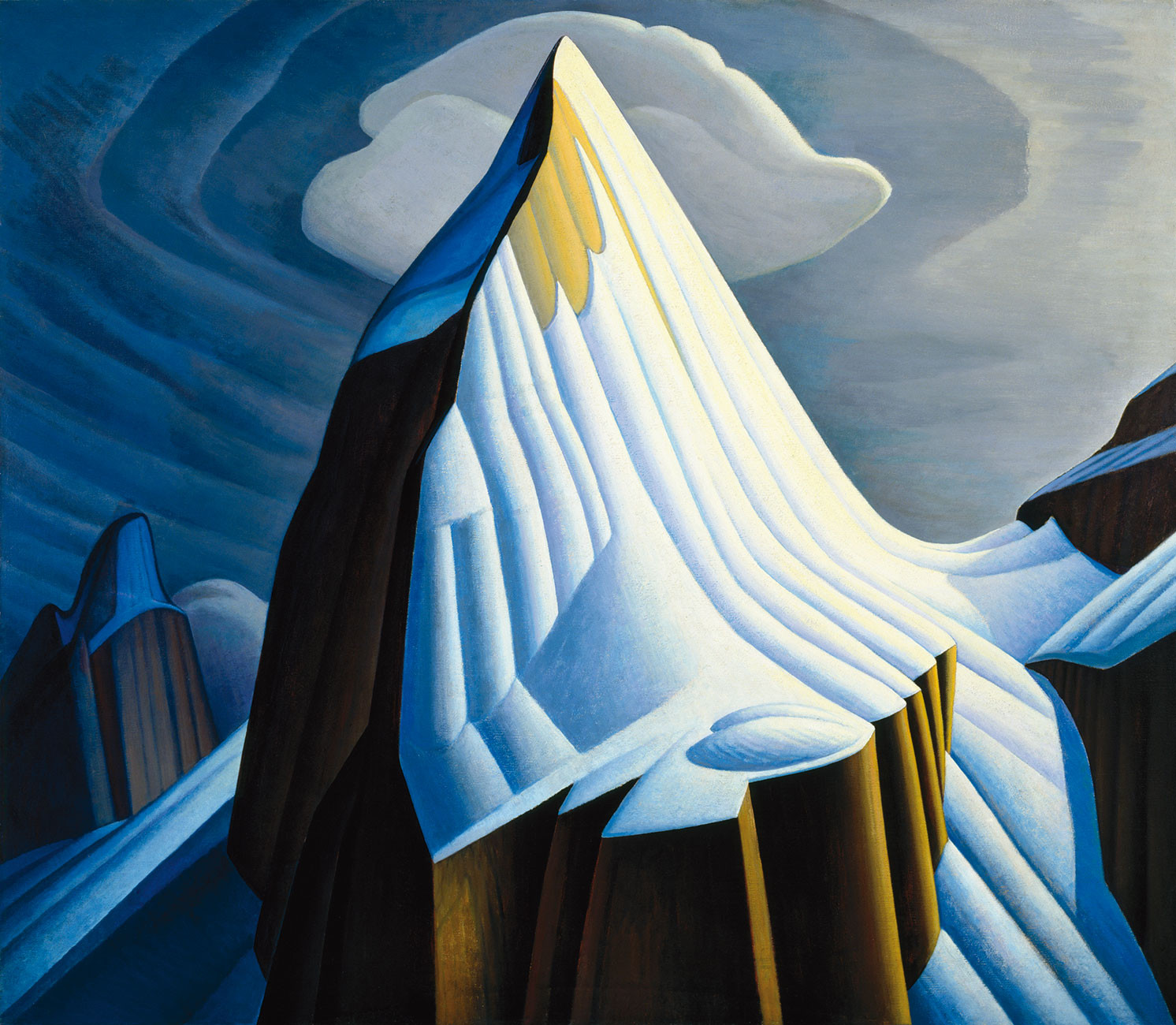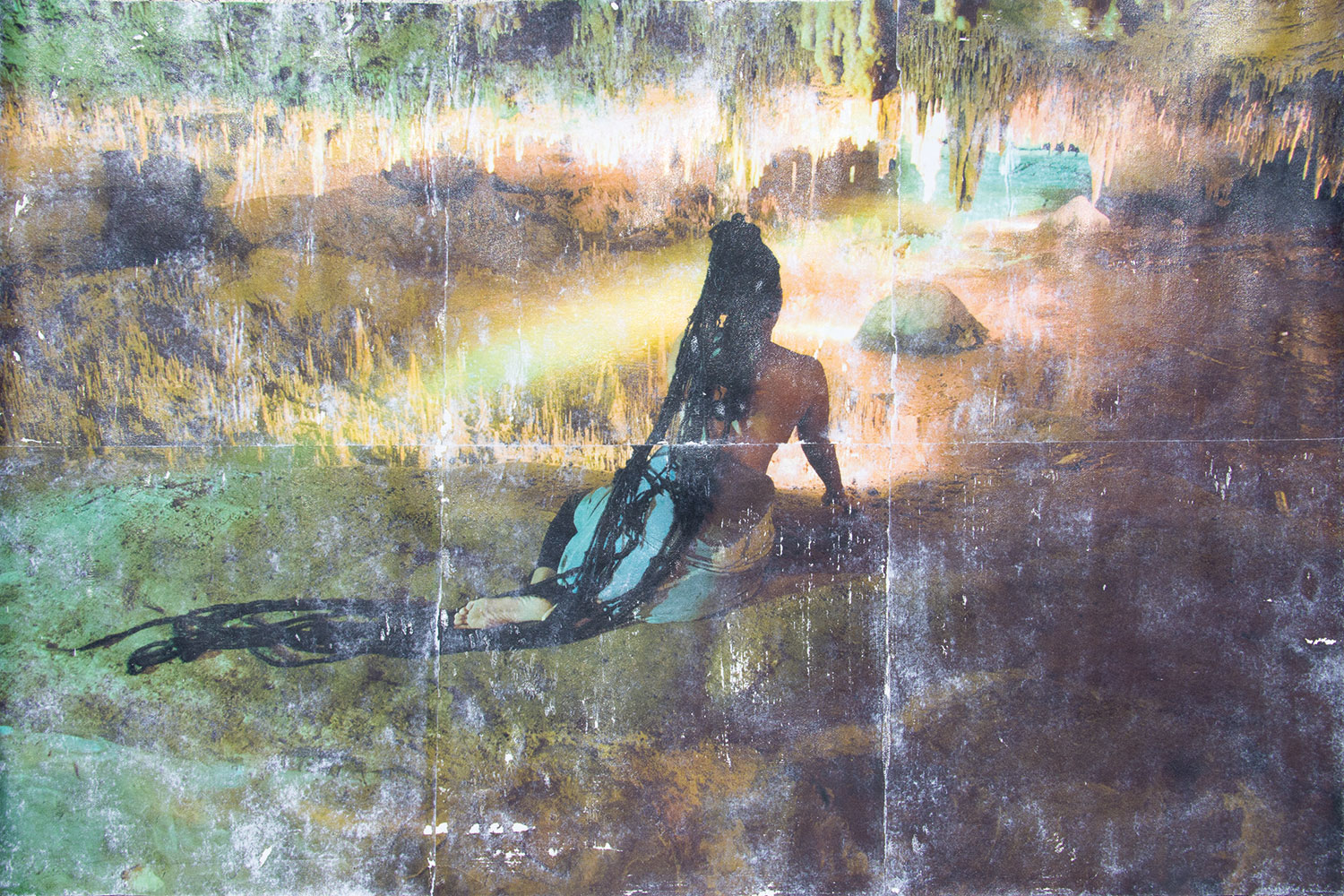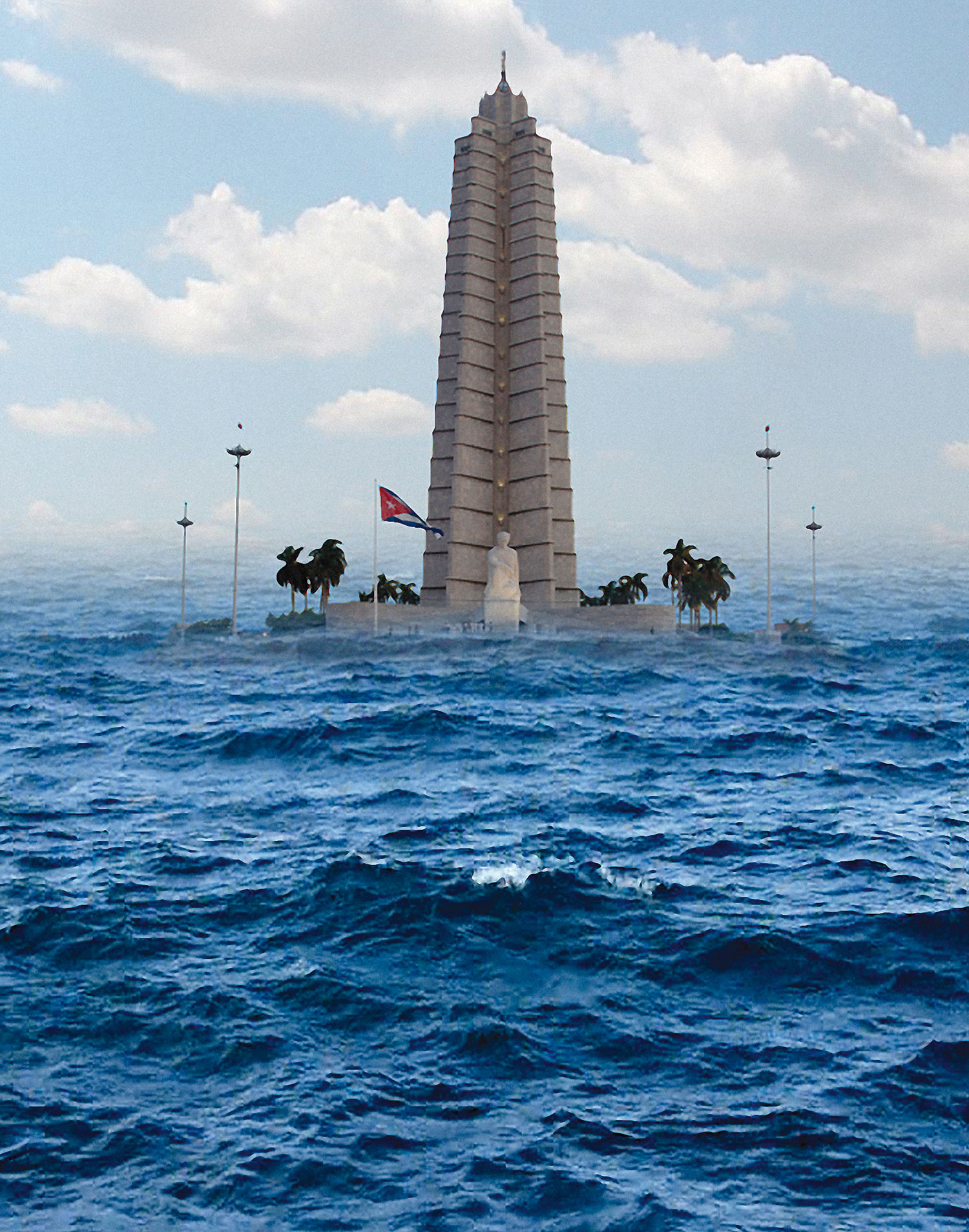
Ben Vickers: Perhaps we could begin with a small overview of Russian cosmism as it relates to your recent work. Julia, in addition to your art practice you worked in the curatorial team on the exhibition ‘Cosmonauts: Birth of the Space Age’, currently on view at the Science Museum in London, so perhaps you could start with a short historical overview.
Julia Tcharfas: Cosmism began as a kind of social, philosophical, artistic, and culture movement that proposed total societal transformation through space travel. It was initiated in Russia by one particular philosopher, Nikolai Fyodorov, in the late 19th century and immortalized in his posthumous text ‘Philosophy of the Common Task’. Cosmist ideas first penetrated through writing and art, but then these ideas were picked up by groups of enthusiasts: amateur scientists and engineers who believed that these ideas can be turned into a reality. At the turn of the 20th century, Fyodorov’s protégé, Konstantin Tsiolkovsky, makes the first practical step to transcending the earth’s atmosphere. In what was widely considered a science fiction text, he wrote and published the first accurate calculation for rocket flight. What made the cosmists absolutely fascinating was that they not only had these fantastical beliefs about transforming human life, trying to change their diets and create their own languages, and trying to achieve immortality through space travel, but that they were experimenting with biology and rocketry as a practical scientific problem to be solved.
BV: I am wondering if Arseny, you can expand on some of the theory and the philosophy here.
Arseny Zhilyaev: It’s important to note that one of the key aspects of Fyodorov’s conception of mankind’s place in the cosmos was the resurrection of the dead and the subsequent resettlement of newly resurrected generations on other planets. And so, if you resurrect all humans who ever lived on earth, then you need more space. Space exploration, then, is just one consequence of this moral duty to the dead. This is at the core of Fyodorov’s philosophy of the “common task” (as he called it).
It is also interesting that the main place for all these transformations according to Fyodorov’s was to be a museum (in the broader sense of the word.) He thought that museums could be a platform resurrection, including space exploration work, scientific laboratories, art galleries, educational facilities and a church (because church has a intuitionalized vision of immortality without the tools to realize). This institution was meant to connect different communities of people, and what is interesting is that this is really close to a contemporary understanding of progressive art institution. Today, this work exists elsewhere. For example, we already have strong scientific movement fighting against death and aging in general. Or we have security services and corporations that collect personal information including DNA. But rather than for a ‘common task’, the contemporary goal in collecting information is for financial gain and control.

BV: Julia, some of your recent writing has considered a new kind of space race, imbued with a relation to capital and luxury.
JT: I recently wrote an article about the inaugural space flight of the first space tourist, Dennis Tito, who flew with the Russian space program to visit the International Space Station for ten days in 2001. I was interested in the images taken by this first space tourist – a new kind of artifact within space travel history, the first space holiday photo. From these images we can view the Earth, not as a Cold War battlefield, or a finite delicate holistic organism, but as a luxury attraction. The view that unfolds in front of the first space tourist takes shape from a vantage point of privilege and business achievement. In a sense, I argue that ‘the overview’ transforms based on the one who is doing the looking. At the same time as Dennis Tito looks out on the earth from the ISS in 2001, the luxury Palm Island resort in Dubai, which advertises itself on the scale of the worldview begins construction, and even though these two events are a mere coincidence, the viewer and the view from the cosmos is entangled in the physical and political reality on the ground, in this case the transformation of the new Russian Federation space programme to a new era of capitalist ideals.
BV: This may be a digression, but it’s interesting in terms of thinking about the ‘whole earth effect’ that Stewart Brand demanded that NASA release the image of The Blue Marble so that he could put it on the front of the Whole Earth Catalog, which broadly speaking is now credited as an early articulation of many of the ideas that gave rise to the Internet.
JT: We think that we can achieve space travel and leave earth into the unknown alien worlds, and look back and see the earth at a distance as this thing we left behind. But actually what the Russian scientists and space travel teach us is that you can’t really escape the Earth or its environment because we are biologically tied to it. We can’t be a body outside the Earth and therefore the space suit and the spacecraft act as little closed systems that allow us to bring our environment and our Earth with us in the form of temporary supplies. So even though we think we are looking back at the environment we are actually quite literally still a part of it. My entry point into Russian space science was this idea that a human has to be linked, almost through an umbilical cord, to their environment, and the experiments these Soviet researchers staged using closed systems, mimicking the regenerative life cycles of the earth in sealed environments with volunteer crews.
AZ: Actually I cannot fully agree. There is an aspect to Russian cosmism that suggests that if you want to live in outer space, yes, you should make efforts to transform the environment to make it more friendly to us, but at the same time we should transform ourselves into something else, maybe into machines or, I don’t know, new humans more suitable for interstellar flights.

BV: In an essay by Benjamin Bratton, called ‘Notes on Extinction: Emergence of Biochemical Design’, Bratton states the only thing that we can know now about the post-Anthropocene is that it is an era in which humans are no longer the dominant geological actor. A new earthling species may prove to be more fit for an altered environment, or better at making the next evolutionary steps than humans are, but for us to survive we may have to become more like them and less like what we are now. In the longer view, the human’s role may be that of enabling intermediary between early primates and as yet to emerge phyla: a blend of organic and inorganic flesh and thinking. And it is very interesting, Arseny, that you stated this kind of transhumanist edge because this is not something that I was entirely aware of in Russian space philosophy or ideology.
AZ: It is a core part of this theory because it appeared to be a reinterpretation of evolution. It’s maybe the first time that they proposed that humans are not the last step in evolution, and that continuing with evolution means transforming ourselves and transforming our realities.
BV: I think it is particularly interesting to consider it in this moment because if we look to Silicon Valley think of the activities of companies such as Google/Alphabet. They don’t actually say that they have a space programme but they probably do. They openly have Calico, which is a life extension company. In fact, Mark Zuckerberg of Facebook recently came out and said that the future of Facebook is telepathy. It’s interesting that for the most part those technologies, startups, and businesses, are devoid of any philosophy, and are positioned as agnostic. But if you look at it in terms of the things that are driving, then there is a strong parallel with ideas about evolution, immortality, resurrection and so on. Listening to this conversation and learning from you both, I’m terrified by the idea that these kinds of philosophies link up in this moment, when those companies are rising to increasing power.
AZ: Well, I agree with your reasoning, but Russian cosmists and dreamers didn’t have a business vision. It was based on the idea of a pure effort of humankind, pure artistic efforts, and a pure impulse to transform the nature of our planet and universe. We have more or less the same processes, starting with the space program and with collecting personal data, but with goal of reaching more and more money. For me, this is the most interesting problem and there is a space for artistic interpretation, working with this intriguing overlap.
JT: I think that the two must have common roots somewhere. I’d be curious to know more about these corporations and get a sense of their ideas of the ‘common task’.

BV: I just wanted to link that to something that you produced once, Julia, which was a reference to Biosphere 2 — a research facility in Arizona originally built to be an artificial, materially closed ecological system —, because these experiments and the attempts at living in common with one another have been going for least for the last 70, 80 years.
JT: It’s interesting, because the Institute of Ecotechnics — the group responsible for creating the Biosphere 2, had to operate as a space agency in order to access research done by Russian space scientists. They were specifically looking at the Russian space biology experiments from the Institute of Biomedical Problems conducted in the late 1950’s, in one of the first biological facilities to test and rehearse what life in space would be like for a living organism. The Biosphere 2 team went to the Institute of Biomedical Problems in Moscow in the 1980s and visited a those sites where they ran closed-system experiments to see what it would be like to create bubble worlds where you could regenerate food, air, and water and have a waste recycling system in a sense trying to mimic the environment so that it can be reproduced elsewhere.
So they got this simulated environments idea out of space travel history and specifically Russian space travel history, but they took it a step further in an attempt to redefine the entire life and culture inside these new environments, very much like the cosmists. They created new diet practices and even in some cases creating new languages or new cultures, new art. So it became a whole life in a bubble, not just a scientific experiment. And that is why it sits so nicely alongside Fyodorov’s philosophy, because this group basically created a simulated test that acted both as a potential architecture for a space colony on Mars, but also created very real cultural experiments inside it.

BV: To continue that relationship to pastoralism, then, the theme of this a lot of the critique of the pastoral ideal is linked to naivety or a childlike way of seeing the world or equally a kind of nostalgia of these kind of communities migrating from the countryside to the urban sprawl and looking back at nature as a kind of ideal. I just wondered how you would respond to naivety as a kind of attack on these ideas?
AZ: One of the main mass cultural examples of dreaming about outer space today is Christopher Nolan’s film Interstellar (2014), in which you begin with the loss of illusion of naivety and happiness, and pastoral natural life, and see a further attempt to find it again somewhere else. But naivety itself, for me, is a good thing, because we need it for experiments and for opening new radical alternative visions of our reality. Without naivety we cannot do anything, so we should be naive persons I think.
JT: It is curious that the pastoral sits so very comfortably within the technology driven space history. Life in space is most often envisioned as a fresh start in a kind of idyllic nature encapsulated in high tech shell of the space base. But this ‘starting over’ is a way of going back. To create and populate a space station is to start from scratch, and what you populate it with is very often a form of idyllic, pastoral environment. Life in space has allowed us to consider and imagine starting over and these thoughts resonate with both the counterculture and the high tech culture.

